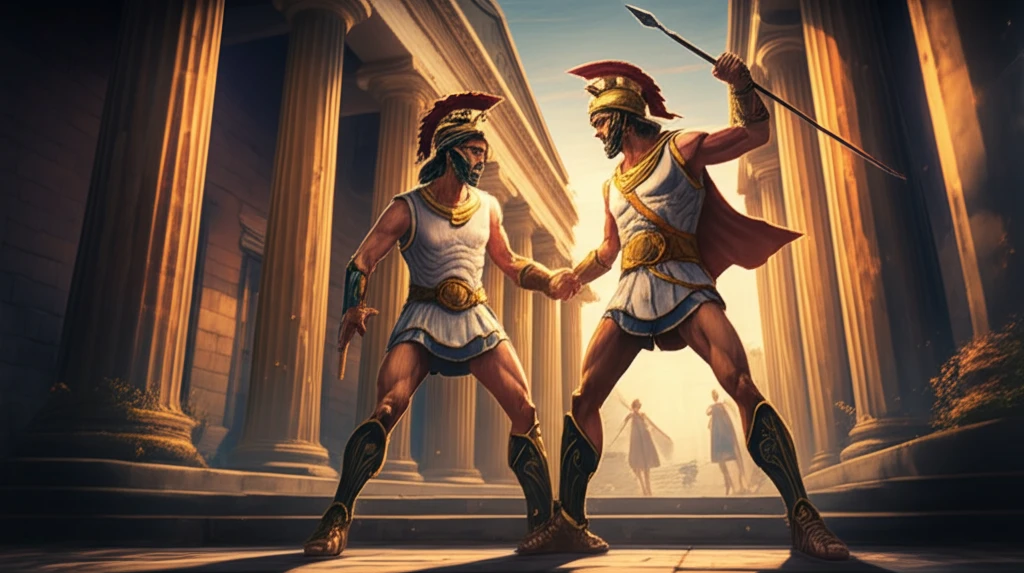
Unearthing Athenian Ideals: How Two Statues Shaped Democracy's Story
"Explore the hidden narratives behind the Tyrant-Slayers statues and their enduring impact on Athenian political thought and cultural identity."
In the heart of ancient Athens, amidst the bustling agora and towering temples, stood a pair of statues known as the Tyrant-Slayers. These weren't just artistic masterpieces; they were potent symbols, loaded with political meaning and capable of stirring profound emotions. A new analysis, inspired by the book 'The Tyrant-Slayers of Ancient Athens: A Tale of Two Statues' by V. Azoulay, delves into the fascinating journey of these statues, revealing how their significance transformed over centuries, mirroring the shifting tides of Athenian society.
Originally erected to honor Harmodius and Aristogeiton, who assassinated the tyrant Hipparchus in 514 BCE, the statues quickly became emblems of Athenian democracy. Their act, though driven by personal motives, was interpreted as a heroic blow against tyranny, paving the way for the establishment of a more inclusive government. The statues, therefore, weren't just representations of two individuals, but embodiments of the ideals of freedom, courage, and civic responsibility that defined Athenian identity.
However, the story of the Tyrant-Slayers statues is far more complex than a simple tale of democratic triumph. As Azoulay's research highlights, their meaning was constantly renegotiated and reinterpreted by various social actors, each seeking to appropriate their symbolism for their own purposes. From oligarchs to Roman emperors, the statues served as a canvas onto which different political agendas were projected, reflecting the ever-changing dynamics of power and ideology in the ancient world.
A Living Legacy: How the Statues Evolved Over Time

The story of the Tyrant-Slayers statues begins with their creation in the late 6th century BCE. The original statues, sculpted by Antenor, were commissioned shortly after the expulsion of Hippias, the last of the Peisistratid tyrants. These statues, though lost to time, represented a pivotal moment in Athenian history, marking the transition from tyranny to democracy. While Pliny suggests a date of 510/9 BCE for the erection of the Antenor group, some scholars speculate it may be a bit later, after the Battle of Marathon. This initial placement underscores their immediate importance as symbols of liberation.
- Political Symbolism: The statues were not just art; they were political statements, used to legitimize regimes and rally support.
- Iconographic Adaptations: The way the figures were depicted, their poses, and even their placement all contributed to the evolving narrative.
- Historical Context: Each era, from classical Athens to the Roman Empire, reinterpreted the statues through its own lens.
- Enduring Influence: Even today, the image of the Tyrant-Slayers continues to resonate as a symbol of resistance and democratic ideals.
An Everlasting Reminder of Freedom
The Tyrant-Slayers of Ancient Athens offer a powerful reminder that symbols are never static. Their meaning is constantly shaped and reshaped by the forces of history, reflecting the hopes, fears, and aspirations of each generation. By understanding the complex story of these statues, we gain a deeper appreciation for the enduring power of art, politics, and the human desire for freedom.
